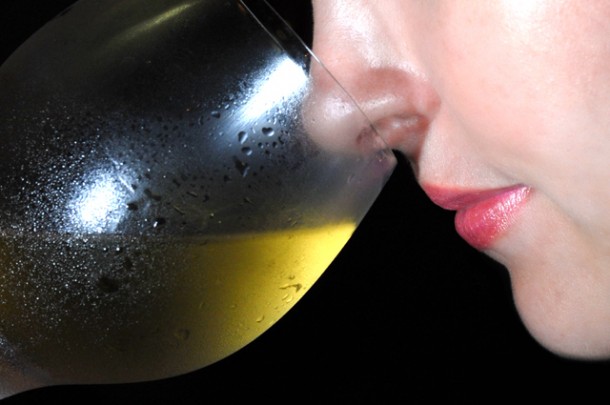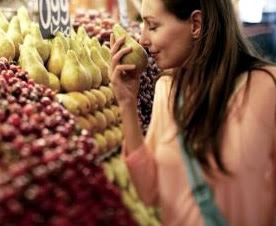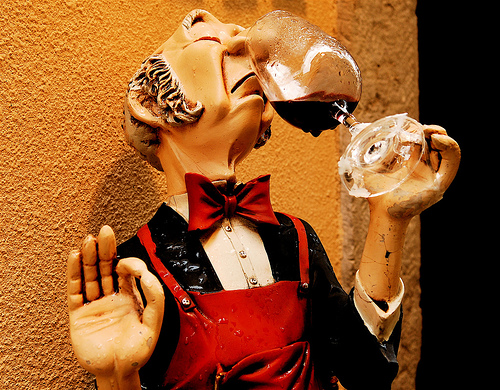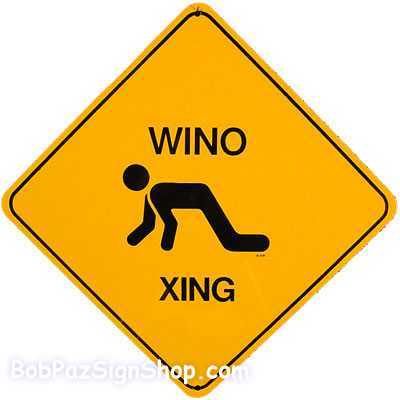What’s the Word for It?

One of my favorite things to poke fun of in the wine world is the critical review.
I find many of them comical because it seems that the writers try to find the most obscure phrase possible. While characters of earthy morning dew from a Tuscan field may sound adventurous, it doesn’t really tell you much about the wine.
The sensory teams in winemaking try to evaluate their wines in clear and concise terms. Esoteric descriptions are to be avoided as best as possible, but that’s not to say that exotic terms aren’t still valid descriptors.
Lychee for instance is a common character of aromatic grapes such as Gewürztraminer. For those not familiar with it, a lychee is a small tropical fruit that looks like a small, pinkish, spiky ball. It has an outer rind that is peeled away to reveal a white, somewhat translucent flesh surrounding a large stone seed. Its flavor is rather exotic and distinct, and the character of lychee is the term one would use to describe that flavor if you found it in wine.
I mention this because you need to develop a vocabulary of smells to be able to describe a wine clearly. If I blindfolded you and waived a plate of fresh strawberries under your nose, could you come up with the word “strawberry” to describe what you smelled? Many people are so dominant in vision and hearing as their primary senses that they have a hard time associating the aroma of something with the term to describe it using only the their sense of smell to guide them.
Your Smell Vocabulary
And so I wanted to discuss developing your smell vocabulary, and how you can use it to describe what you like and don’t like when it comes to wine, so you can better find enjoyment in buying wines that please your palate. The first thing to understand about smell vocabulary and wine is that while specific terms such as lemon, apple, or peach are great terms to describe wines, they all share a common generality, which is they’re fruity.
When you begin to talk smell vocabulary, you should start with generalities, and then work to specifics. Grapes are fruit, so it makes sense that you’re going to smell fruity aromas in your wine. When it comes to fruit characters, you begin to look at general classes of fruit. Lemon, lime, and grapefruit are all common descriptors for light, crisp white wines such as Pinot Grigio and Sauvignon Blanc. They all share the common character of being citrus fruits, so the general term would be citrusy. While wine geeks like to make serious distinctions between their Chardonnay smelling like green apples or pears, it’s really an exercise in cutting hairs as both fruits are very similar in general character, which is light flavored, malic acid based tree fruits.
 The same goes for descriptors such as raspberries and strawberries. Both are light flavored berries. When looking for fruity aromas and flavors in wine, you should look to distinguish between the general class of fruit. Is it citrusy, is it more light tree fruit, is it light berry fruit, is it tropical fruit, is it more dark berry or tree fruit, does it have a cooked fruit/jam flavor, or is it a dried fruit/raisin flavor?
The same goes for descriptors such as raspberries and strawberries. Both are light flavored berries. When looking for fruity aromas and flavors in wine, you should look to distinguish between the general class of fruit. Is it citrusy, is it more light tree fruit, is it light berry fruit, is it tropical fruit, is it more dark berry or tree fruit, does it have a cooked fruit/jam flavor, or is it a dried fruit/raisin flavor?
The same premise holds true for all other aromas and flavors you might use to describe wine. Many wines are oak aged, so it’s common to use general flavor classes to describe oak influence. Oak tends to add general woody, nutty, smoky, spicy, and sweet/creamy characters to wine. There’s influence from aging and general characters of the grapes themselves, but terms you would commonly see from oak aged wines are oak, hazelnut, vanilla, coffee, black pepper, anise, and clove.
The best way to develop your smell vocabulary is simply to experience more various tastes and smells. A good training exercise is to spike a fairly neutral wine or even water with distinctive smelling characters you would expect to find in wine: a slice of green apple, a few drops of vanilla extract, a few fresh grounds of coffee, some fresh squeezed lemon juice, etc. Learn to distinguish the smells themselves without having the visual cue. The larger your vocabulary gets, then the more you can get specific in describing what you sense.
In no time at all, you’ll be telling everyone you like big bold Cabs with plenty of black pepper, dark cassis, and a hint of bell pepper.
Drink responsibly.




